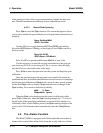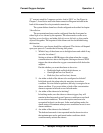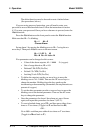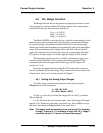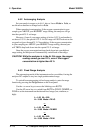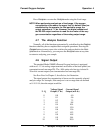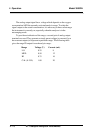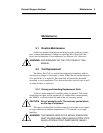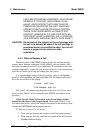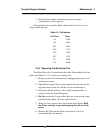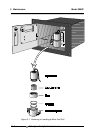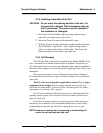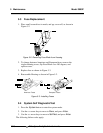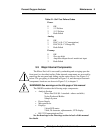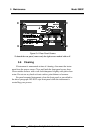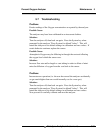
5 Maintenance Model 3000P
5-2
Teledyne Analytical Instruments
LEAD AND POTASSIUM HYDROXIDE, THAT CAN BE
HARMFUL IF TOUCHED, SWALLOWED, OR IN-
HALED. AVOID CONTACT WITH ANY FLUID OR
POWDER IN OR AROUND THE UNIT. WHAT MAY
APPEAR TO BE PLAIN WATER COULD CONTAIN
THESE TOXIC SUBSTANCES. IN CASE OF EYE
CONTACT, IMMEDIATELY FLUSH EYES WITH WA-
TER FOR AT LEAST 15 MINUTES. CALL PHYSICIAN.
(SEE APPENDIX, MATERIAL SAFETY DATA SHEET.)
CAUTION: Do not disturb the integrity of the cell package until
the cell is to actually be used. If the cell package is
punctured and air is permitted to enter, the cell will
require a longer time to reach zero after
installation.
5.2.2 When to Replace a Cell
When the sensor in the 3000PA begins to fail, the analyzer usually
requires more frequent calibration. If the 3000PA analysis readings drift
downward uncharacteristically, try recalibration. If recalibration raises the
readings temporarily, suspect the cell, but first check for leaks downstream
from the cell where gases may be leaking into the system.
You can check the output of the cell itself by going to the
System
function, selecting More, and pressing
Enter
. The cell output reading will
be on the second line of the display.
Version Self—Test
Cell Output: ### µA
The “good” cell output range depends on the class of cell your ana-
lyzer is using. The B-1 cell is standard in the 3000PA, but others can be
specified.
Check Specific Model Information in the Front Matter in this
manual for the class of cell you purchased. Then check Table 5-1, the
cell index table below, and do the simple calculation. If the resulting value
is below the Cell Output reading, replace the cell.
To find out if your cell is too weak:
1. Flow span gas through the analyzer, and allow time to purge.
2. With span gas flowing, read the raw output of the cell from the
System
function display.



